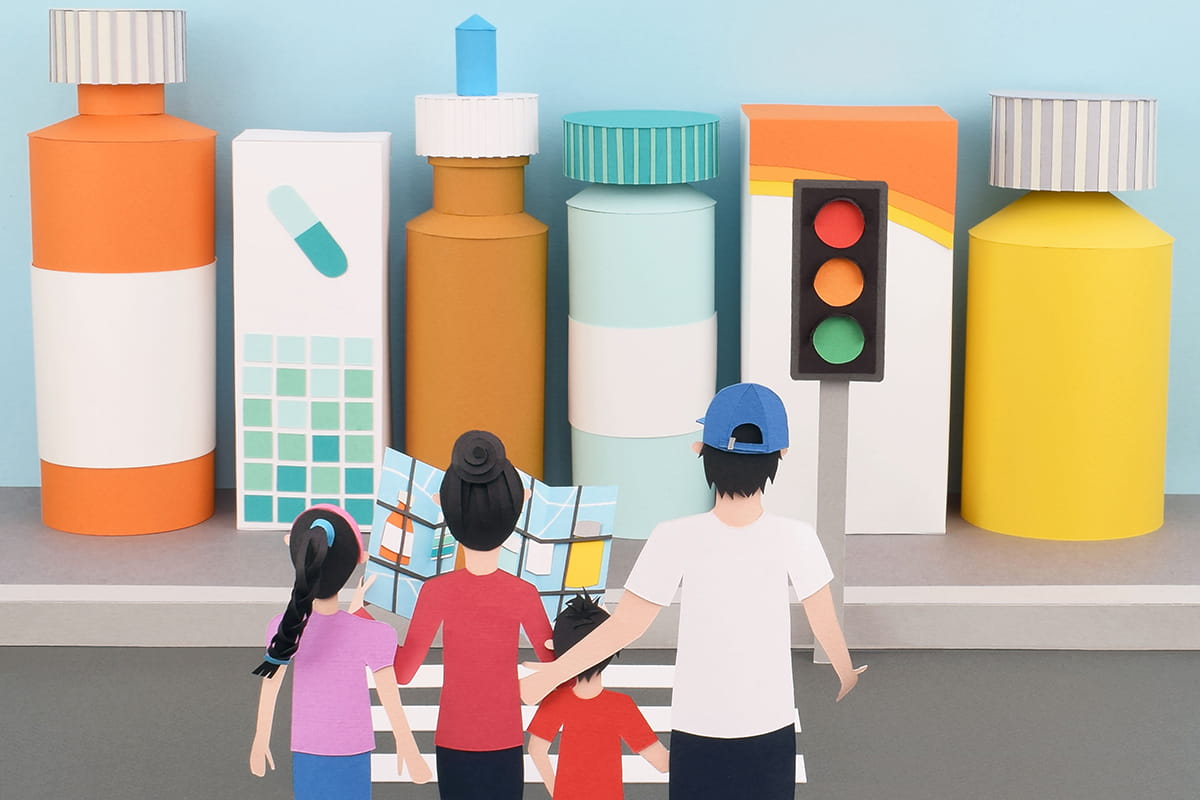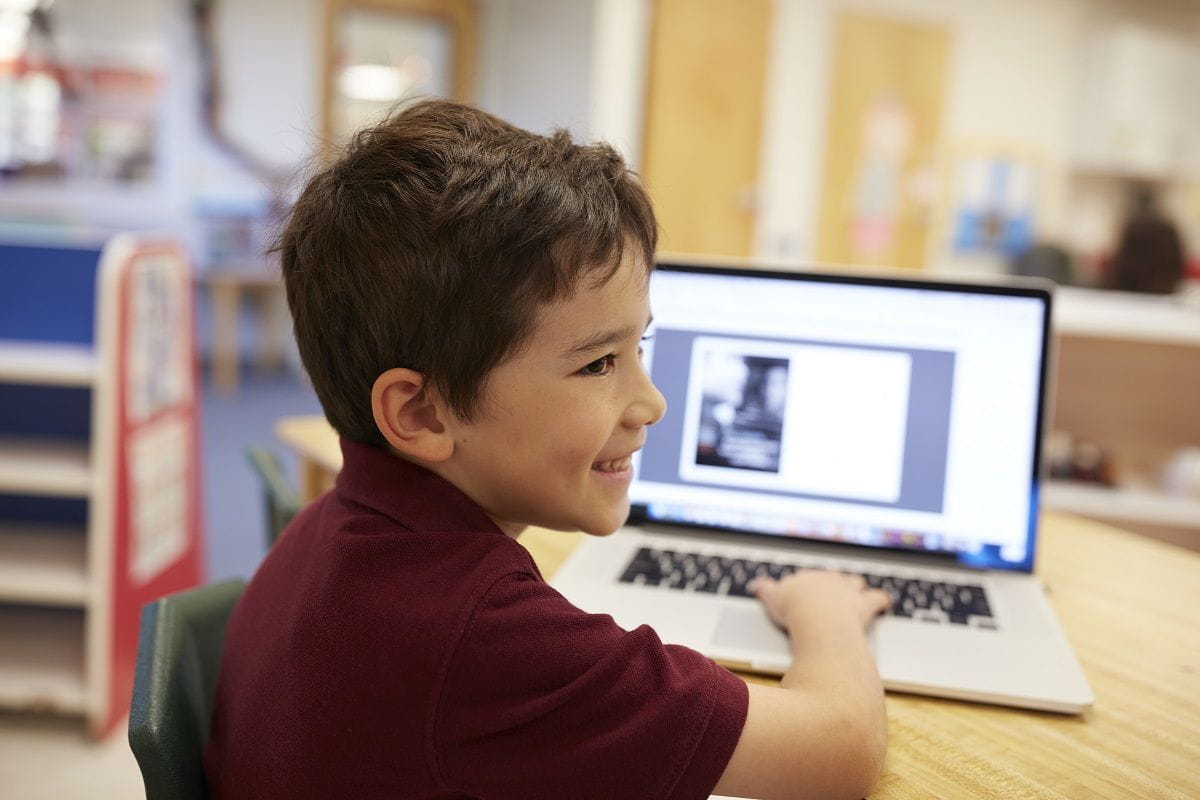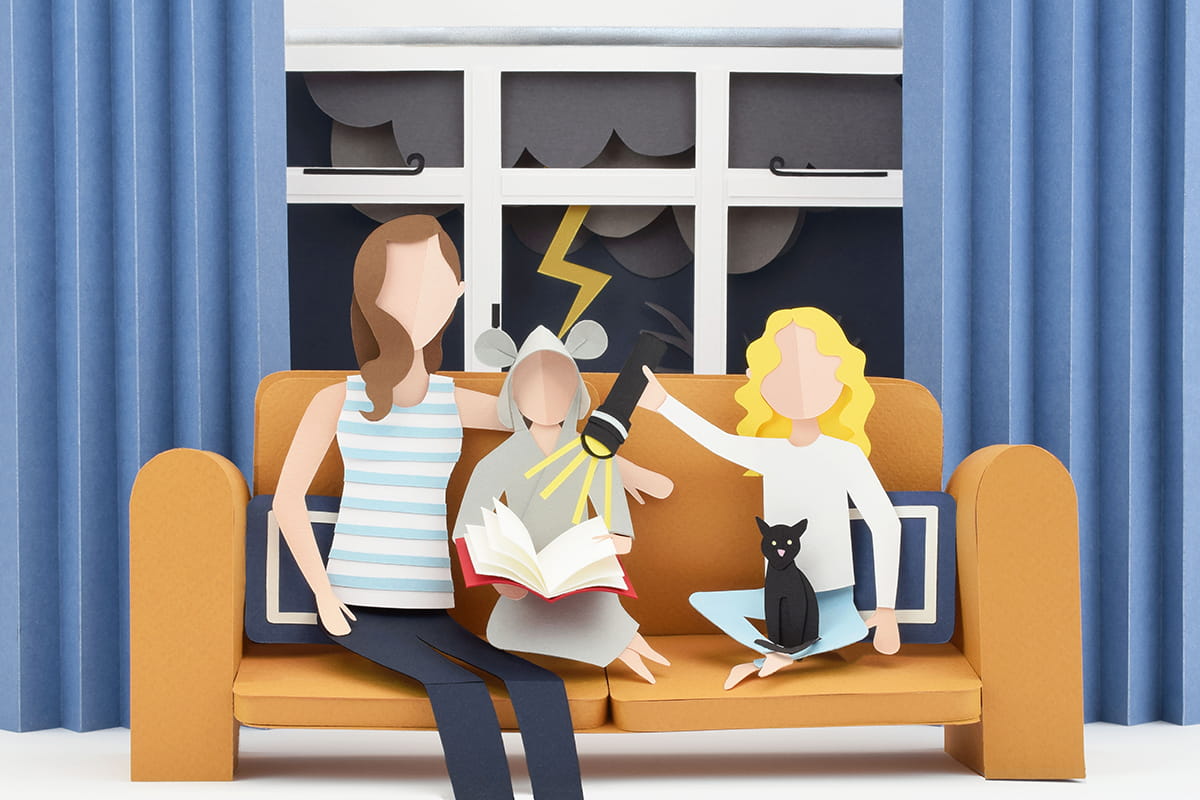6 Simple Medication Safety Practices to Keep Kids Safe at Home

Remember Mr. Yuk? (Or maybe you don’t.) Created in the 1970s, the iconic day-glo green sticker with the yucky face was supposed to teach children which household products were poisonous.
While the Mr. Yuk campaign focused on household products, today a big culprit in pediatric poisonings are medications—both prescription and over-the-counter varieties. Each year, in fact, some 70,000 children go the ER because they’ve ingested a medication they shouldn’t have.
Here’s the good news: Almost all of these ER visits are entirely preventable. That’s where you come in with medication safety and kids.
We’re sharing the top six medication-safety tips you should implement in your home right now. (Learn more about them at upandaway.org.) Moms, dads, grandparents, too: These straightforward steps will make your home safer for young children. All you need is a high shelf, careful storage habits, and a little preparedness.
Here’s what you can do about children and medication safety in your home:
1. Medication Safety Starts with Storing Them out of Sight (and Reach)
Somewhere in your home is the perfect shelf—the one that’s super high and out of sight of little peepers. This is a great place for your medicines. Here’s what should go on it: prescriptions, over-the-counter medicines, diaper rash cream, and vitamins, too!
2. Put Medicines Away After Each Use
Never leave medicines on a counter or a bedside, even if you have to give the medicine again in a few hours. Grandparents, we’re talking to you, too! We know our honored elders may be accustomed to having many prescriptions out for convenience, but before your gorgeous grandkids come calling, find a shelf and tuck those medications out of sight.
3. Listen for the Click
Make sure your safety cap is locked: It should make an audible click. But even so, don’t rely on a cap to keep your kids safe. Curious children can be very clever and persistent (see Rule #1). Up and away and out of sight is best.
4. Teach Your Children About Medicine Safety
Teach your kids that medicines should always be given by an adult. Never, never refer to medicine as “candy.” It may be tempting when you’re facing a closed-mouth refusal, but you don’t want your children to associate medications with something yummy to eat.
5. Tell Guests and Family About Medicine Safety for Children
Sure, it feels strange to bring this topic up when your neighbor drops by for coffee, but consider this: According to Safe Kids Worldwide, in some 43 percent of ER visits for medicine poisoning, the medicine a child got into belonged to a relative who wasn’t Mom or Dad. An easy house rule to institute? When guests arrive, put their purses and belongings in a place that’s out of reach of little fingers and out of sight.
6. Program 800-222-1222 in Your Phone Right Now
It’s the Poison Help number of the American Association of Poison Control Centers. We hope you will never need it, but if you do, we want you to be ready. (By the way, use this number even if you think your child *may* have gotten into a medicine or vitamin bottle. When in doubt, call.)
KinderCare Education’s Medication Safety Practices
We know that healthy children are happy children, and sometimes they need to take medicine to stay healthy. While we encourage parents to give medications at home, there are times when children need them at our learning centers. For the health and safety of all children, we take our medication safety practices seriously—very seriously. These are just a few of our strong practices:
- All medicines brought into our center must be in the original container, and we always require a Medication Authorization completed and signed by a parent or guardian. Many medicines require an additional physician’s note, which is always required for medicine to be given to children under age two.
- All medications are carefully labeled for each child and stored securely in an out-of-sight location that is inaccessible to children.
- When giving medications, we follow the best practices of the “Five Rights”: Right child, right medication, right dose, right route, right time.
- We’re sticklers for detail: We keep a careful log of medicines administered to each child




